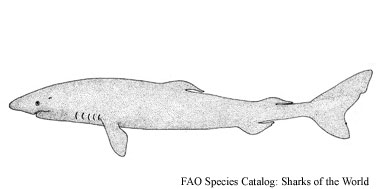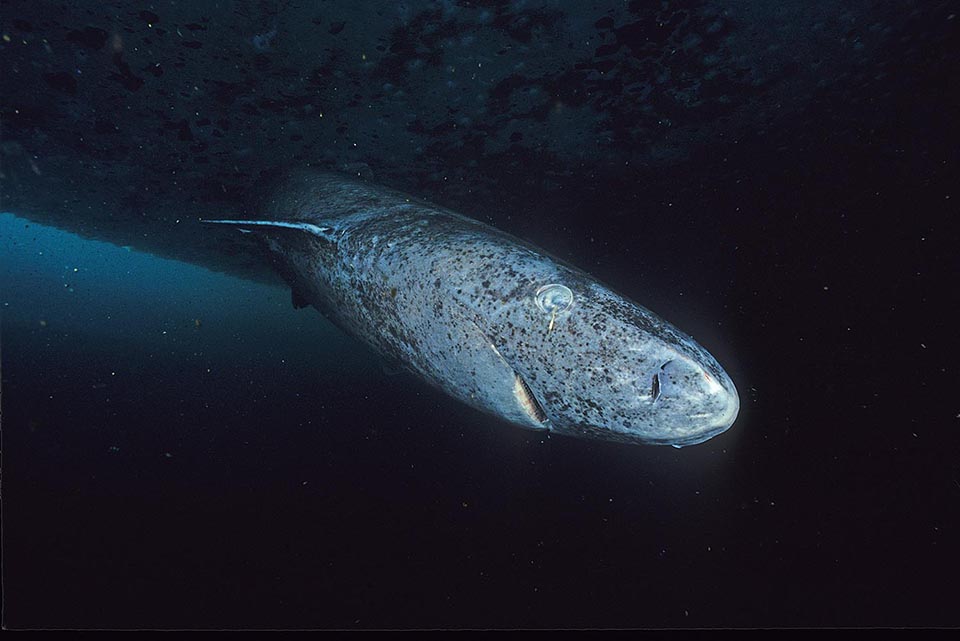The Greenland shark (Somniosus microcephalus) differs from not only other sharks, but also from other vertebrates as well. This is a large sleeper shark, up to at least 640 cm in total length, that can be found in cold areas; from the USA and Canada to Greenland in the west and from Portugal to the Barents Sea and East Siberian Sea in the east. This species can be found deep too, from the surface all the way down to 2,647 meters and are the only shark that can withstand the cold waters of the Arctic Ocean year-round. But, you see, the reason this shark is incredible is the fact that it is actually the longest-lived vertebrate that we know of.
This species possesses a lifespan that can be, even at the lower end of estimates, 272 years long. But, our estimates on them do range largely, from 272 to 512 years, which is due to the special way in which their bodies are made up. Since these sharks do not have any fin spines or hard tissues in their bodies, things that would usually tell age through counting growth bands, scientists needed another way of finding their age. But, Greenland sharks do have a protein in their eyes that are formed before birth, and are not degraded by age, essentially like a fossil. So, by using carbon dating, a process usually used to find a general age of things like fossils, we can use these proteins to get an estimate on the age of a Greenland shark.
At first, people thought the secret behind this species’ long life was due to their very slow metabolism, little movement, adaptations to the deep waters they inhabit, and because of the cold waters they live in. But, more recent studies have found that this species actually has multiple copies of a gene that influences the NF-xB signaling pathway, which helps support the body’s immune system and manages inflammation. Without this pathway, tumor cells and pathogens flourish, which suggests how important a role this plays in the overall health and well-being of an animal. Red sea urchins (Mesocentrotus franciscanus), another long-living animal, also have multiple copies of such a gene, providing further evidence that these genes really place such an impact on their advanced age.
And there’s still more, another study on a Greenland shark’s genome found multiple copies of 81 genes that are involved in DNA repair, in particular they have an altered version of the TP53 gene, that helps with suppressing tumors and repairing DNA. This gives scientists another hint as to the true cause of the Greenland shark’s long lifespan.
We are slowly beginning to understand what truly causes Greenland sharks to age so much longer than other vertebrates, and with even more discoveries, it could even possibly lead to breakthroughs in medicine as well. So, not only is it amazing how these creatures can not only live so long on their own, but this also lets you wonder what impact they can also have on humans in the future, as we slowly begin to study and understand them more.

